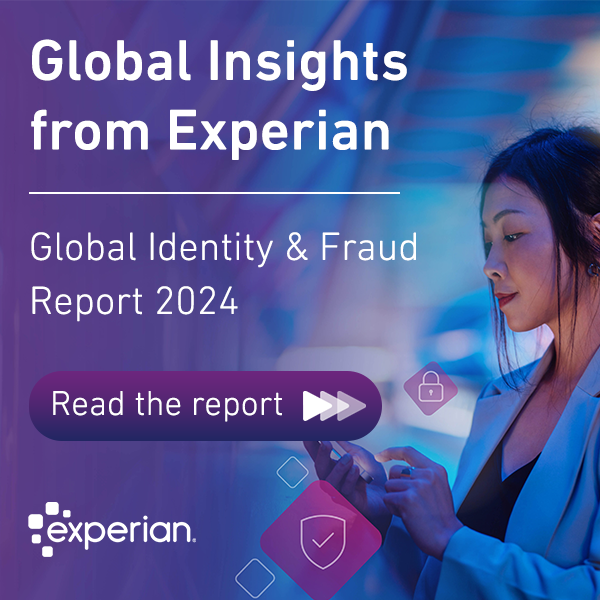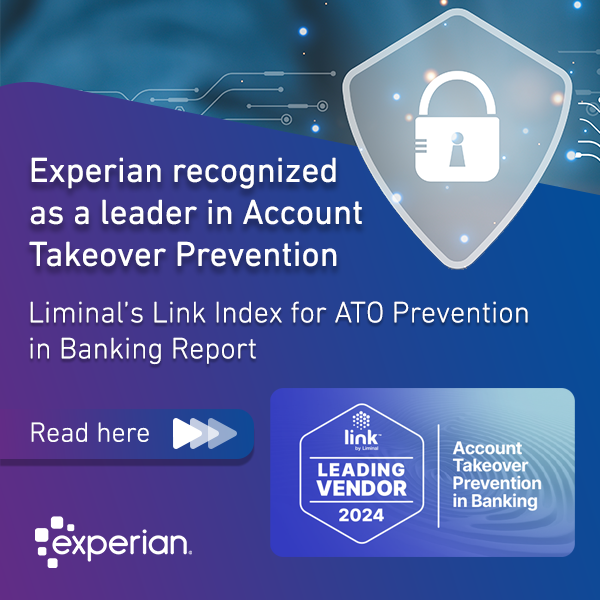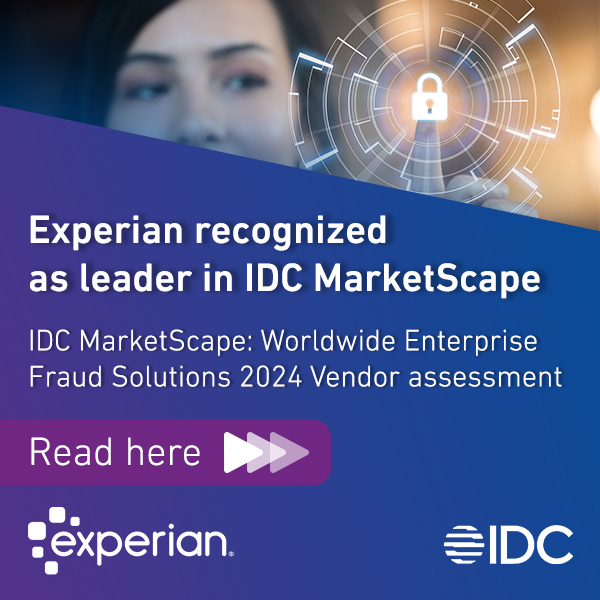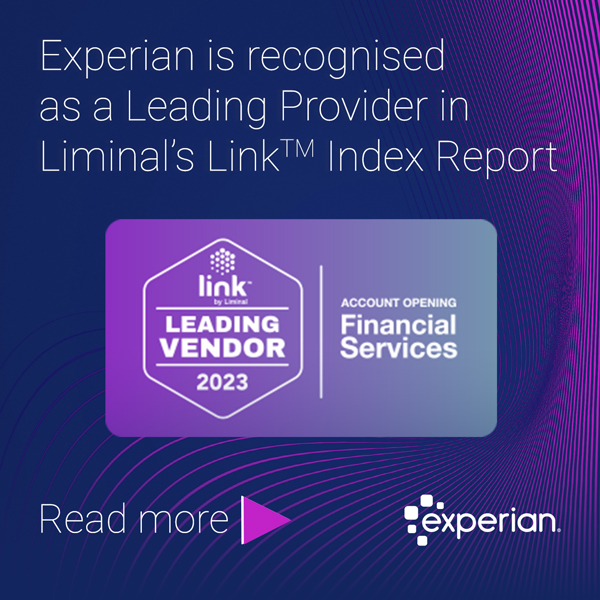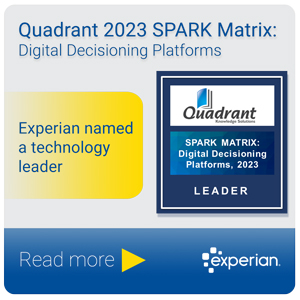All posts by Paulina Yick, Global Portfolio Marketing Director, Experian Software Solutions

Experian's new global report is now available on how businesses can enhance efficiency, insights, and growth through integration to transform the future of risk strategy. Download report In the ever-evolving financial landscape, the convergence of credit risk, fraud risk, and compliance is becoming a game-changer. Financial institutions (FIs) increasingly recognise the need to integrate these functions to enhance efficiency, gain deeper insights, and drive growth. The 2024 global report on the convergence of credit, fraud, and compliance sheds light on this critical transformation, emphasising how a unified strategy can revolutionise risk management. The report highlights the importance of convergence in shaping the future of financial services. We surveyed 750 leaders in credit risk, fraud risk and compliance in financial services organisations across the world. Inside the report: The need for convergence As technology advances, financial institutions (FIs) face the dual challenge of managing complex systems while simplifying consumer processes. The report reveals that organisations use an average of eight tools across credit, fraud, and compliance, with some using more than ten. This fragmentation leads to inefficiencies and increased risks.In addition, 79% of respondents want to work with fewer vendors to manage credit risk, fraud, and compliance, underscoring the need for streamlined operations. Independent evolution of functions and associated challenges Credit risk, fraud risk, and compliance functions have evolved independently, creating operational silos and technology management challenges. This separation has led to increased fraud and credit losses. The report highlights that only 9% of organisations prioritise these functions equally, with most focusing on fraud. However, 87% of respondents acknowledge the overlap between these areas and are working towards closer collaboration. Regulatory pressures and advanced fraud techniques New regulations in the US, UK, and EU are compelling FIs to reimburse consumers for losses due to scams, increasing the liability for both sending and receiving banks. Penalties for failing to implement effective Anti-Money Laundering (AML) solutions have also intensified. These regulatory demands and advanced fraud techniques necessitate a more integrated approach to risk management. Early stages of convergence While the market is beginning to recognise the benefits of convergence, many FIs are still in the early stages of this journey. The convergence speed varies, but mature organisations have already started or plan to start the process soon. The report shows that 91% of respondents believe that forward-looking companies will centralise these functions within the next three years. However, only 15% prefer a 'point solution', 36% prefer a single integrated solution, and 49% prefer modular integration. The role of technology Technology plays a crucial role in integrating functions and managing risk. Next-generation platforms are essential for adapting to market needs, delivering innovative products, and meeting regulatory requirements. The report emphasises the importance of data aggregation, which combines diverse data for deeper insights, and the integration of credit decisioning and fraud detection solutions to balance risk and growth goals simultaneously. Improving risk management through alignment Correctly identifying consumers, managing fraud risk, making informed credit decisions, and ensuring compliance share common ground. The report shows that 57% of respondents believe aligning credit risk, fraud, and compliance functions leads to better overall risk management. Businesses with more centralised practices report improved risk management effectiveness, operational efficiencies, and data integrity. Benefits of convergence The convergence of credit risk, fraud, and compliance offers numerous benefits, including: Improved risk management effectiveness: Better alignment leads to more effective risk management strategies. Operational efficiencies: Streamlined processes and reduced duplication of efforts enhance operational efficiency. Increased data integrity: Centralised data management ensures consistency and accuracy. Cost reduction: Consolidation of functions and technology reduces costs. Enhanced customer experience: A unified approach improves customer recognition and service across all channels. Read the report to find out how to prove value through integration. Download report

In today's fast-paced digital landscape, businesses are inundated with an unprecedented amount of data and information. Making informed decisions with the data quickly and effectively has become a crucial factor for success. Enter digital decisioning—a transformative approach that harnesses the power of data, analytics, and automation to drive reliable and expedited decision-making. This article delves into the world of digital decisioning, exploring its significance, components, and benefits. The Essence of Digital Decisioning At its core, digital decisioning is the process of leveraging software solutions that use digital decisioning platforms or custom-built engines to author decision logic; use decision intelligence technologies such as machine learning and AI; use digital decisions in vertical and horizontal use cases; and manage the full decision logic lifecycle, including feedback loops, to continuously improve decision logic. It enables organizations to make well-informed choices by automating and optimizing complex decision processes. By amalgamating data from various sources in real-time, including credit data, user behavior, market trends, historical data, and external factors, digital decisioning ensures that timely decisions are not only data-driven but also contextually relevant. Components of Digital Decisioning Continuous Data Feed: This is the lifeblood of digital decisions. Organizations normalize data from disparate sources to form comprehensive and accurate datasets. Customer data might include income, credit history, transactional data, bill payment, or digital footprint data; however, regardless of the sources, it’s critical that data is coalesced into a single, virtualized view. Advanced Analytics and Machine Learning: Analytics and machine learning algorithms are deployed to extract meaningful insights from the collected data. These insights are used to model decision scenarios, predict outcomes, and uncover hidden patterns. Decision Models: Decision models are created based on the insights derived from data analysis. These models define the rules and logic for making decisions, incorporating factors such as risk tolerance, business goals, and regulatory compliance. Direct Feedback Loop: Every decision has an outcome. For example, an automated loan offer is either accepted or declined by the customer. These outcomes — good and bad — automatically feed into the decisioning model, which enables the machine learning technology to “learn” which decisions are optimal, given the circumstances and customer profile. This enables the model to adapt and grow more accurately and precisely over time. Automation: Automation engines execute the decision models in real time, allowing for rapid and consistent decision-making without human intervention. This enhances efficiency and minimizes the risk of errors. According to a 2022 Gartner poll, the CIO Agenda, more than 80% of companies plan to keep or grow their investment in automation solutions. Benefits of Digital Decisioning Enhanced Accuracy: Digital decisioning eliminates human biases and inconsistencies, resulting in more accurate and objective decisions. Improved Efficiency: Automation reduces decision-making time from hours or days to milliseconds, enabling organizations to respond swiftly to market changes and customer demands. Hyper Personalization: By considering individual preferences, behaviors, and history, digital decisioning facilitates the creation of tailored experiences for customers, leading to higher satisfaction and engagement. Scalability: The automated nature of digital decisioning ensures that it can handle a high volume of decisions seamlessly, making it ideal for businesses experiencing rapid growth. Regulatory Compliance: Explainable decision models can be designed to incorporate regulatory guidelines and compliance requirements, reducing the risk of legal complications. Use Case: Respond faster to credit card applications and personalize cross-sell offers Customers apply online for a credit card from a bank. As they’re being pre-qualified, digital decisioning will instantly analyze the customers’ accounts with the bank including disclosed and undisclosed cash flow. A digital decisioning software solution enables the bank to assess risk exposure and anticipate the customer’s immediate need(s), thereby automating the application assessment and approval steps to reduce approval times from weeks to minutes. Based on the bank’s comprehensive understanding of that customer at that moment, it triggers a personalized cross-sell offer for another relevant financial product, automatically boosting incremental revenue. Conclusion Digital decisioning marks a pivotal advancement in how choices are made in business. By harnessing the power of data, analytics, and automation, organizations can make faster, more accurate decisions that are aligned with their goals and market realities. As this technology continues to evolve, it will reshape industries and empower individuals to navigate the complex digital landscape with confidence. Experian’s decisioning management platform allows clients to operationalize the power of rich data, advanced analytics, and automated decisioning software to support the customer lifecycle. Its key differentiators include credit risk, fraud risk, and strategy expertise, fast deployment of strategies into test and production, empowerment of business users, and proactive monitoring of strategy performance by users. Its key use cases include reducing acquisition costs, credit risk, and fraud risk, and improving acceptance rate and the customer journey. Experian has been named a Technology Leader in the August 2023 SPARK Matrix on Digital Decisioning Platforms report published by Quadrant Knowledge Solutions. The report highlights the growth of decisioning platforms and the changing market trends that are driving adoption, including the role machine learning and AI are playing in the technology market. This placement is proof that Experian offers best-in-class capabilities through market-leading data, orchestration and automation, advanced analytical models, decision performance, and reporting. Our cloud-based infrastructure enables a scalable and modular platform that allows our solutions to be suitable for customers of all sizes. Read the report Experian’s Decisioning Management Platform: Accelerating analytics, decisioning, and fraud detection automation Continuous improvement loop: Advanced machine learning models improve decisioning quality

As economic uncertainty continues to loom, the threat of fraud continues to grow and is becoming more sophisticated. It’s only going to get worse. Due to intensifying inflationary pressures, prices and costs have been increasing which has led to financial hardship impacting individuals and businesses. This provides an opportunity and motive for bad actors to figure out new ways to commit fraud. Federal Trade Commission data shows that consumers reported losing nearly $8.8 billion to fraud in 2022, an increase of more than 30 percent over the previous year. PwC’s Global Economic Crime and Fraud Survey 2022 shows 51% of surveyed organisations say they experienced fraud in the past two years, the highest level in their 20 years of research. Additional investments in fraud prevention technology are a priority for businesses to combat these evolving threats, according to Experian's Sept. 2022 Global Insights report, which states that 94% of businesses report it as the top priority. Since fraud is becoming more sophisticated, part of the challenge that businesses face is to constantly evaluate multiple solutions so that they can continuously improve their fraud detection and prevention capabilities. Investments that can deliver the highest ROI are the solutions that are integrated and orchestrated in a comprehensive fraud reduction intelligence platform. This gives businesses the flexibility to manage evolving strategies and mitigate threats with real-time decisioning. Experian’s CrossCore is an integrated digital identity and fraud risk platform. It offers global solutions to help protect businesses from fraud and maintain compliance with regulatory requirements, using real-time risk analytics and decision-making strategies. The platform aggregates various fraud and identity verification sources to consolidate risk and trust decisions for Experian clients throughout the consumer journey. Experian’s CrossCore has been recognized as an Overall Leader, Innovation Leader, Product Leader, and Market Leader in KuppingerCole’s Fraud Reduction Intelligence Platform Leadership Compass 2023. This recognition highlights Experian's comprehensive approach to combating fraud. It validates that CrossCore offers best-in-class capabilities by augmenting Experian’s industry-leading identity and fraud offerings with a highly curated ecosystem of partners which enables further optionality for our clients based on their specific needs. Read the report CrossCore's Capabilities
